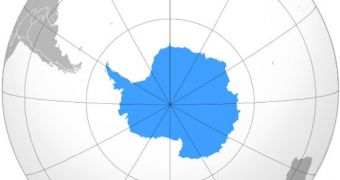A research conducted on Lake Untersee in April 2011 revealed the existence of impressive mounds of photosynthetic microbial stromatolites, which are layered accretionary structures made up of microorganisms. The finding may help scientists figure out how the first lifeforms survived on Earth.
The study was carried out on the largest surface freshwater lake located within the Gruber Mountains, in the central parts of Queen Maud Land, East Antarctica. Scientists say that the discovery allows us access to a window back in our planet's very distant past.
The research team that conducted the 2011 study included University of California in Davis (UCD) geobiologist Dawn Y. Sumner, and was led by expert Dale Andersen, from the Search for Extraterrestrial Intelligence (SETI) Institute, in Mountain View, California.
Biologists say that stromatolites are made up of layer upon layer of microorganisms. Over time, these tiny cells solidify, and become hard as rock, perfectly preserved in fossil form. The ones in Antarctica are believed to have lived more than 3 billion years ago, Daily Galaxy reports.
Scientists decided to focus their investigations on Lake Untersee because it covers an area of 11.4 square kilometers, but also because it’s the largest surface lake on the eastern half of the Southern Continent. The entire lake is about 563 meters (nearly 1,850 feet) above sea level.
Cyanobacteria, long and stringy photosynthetic microorganisms, make up the bulk of the purple-bluish stromatolites investigators discovered last year. Sumner believes that it took each of these structure several thousands of years to form.
They are also very large, standing more than 50 centimeters (1.64 feet) high. All of them are located at the bottom of the lake. “It totally blew us away. We had never seen anything like that,” Andersen says.
Another reason this lake is so special is that its waters are extremely alkaline, while also featuring a high concentration of dissolved methane (CH4). These conditions were not found at other locations.
Experts plan to continue their investigation of Lake Untersee, in hopes of learning more about how bacteria living more than 3 billion years ago looked and behaved. This may provide additional data into how these lifeforms have evolved since that time.

 14 DAY TRIAL //
14 DAY TRIAL //